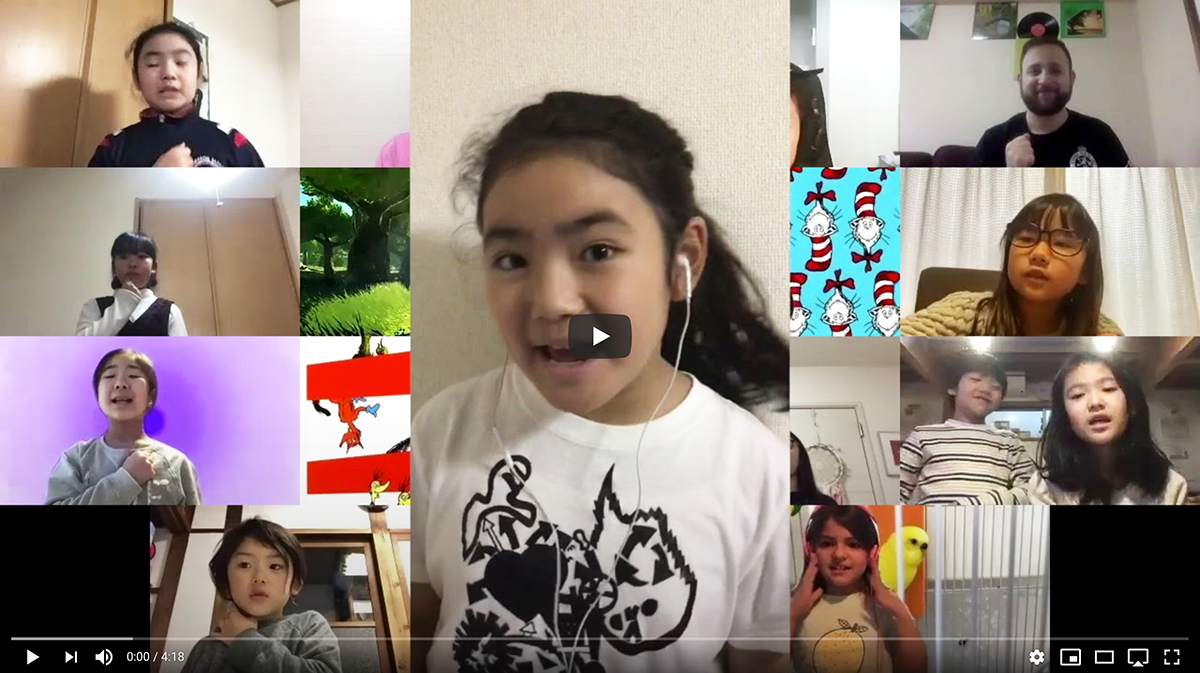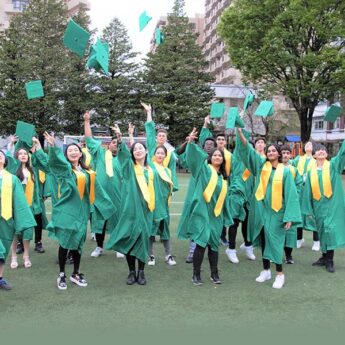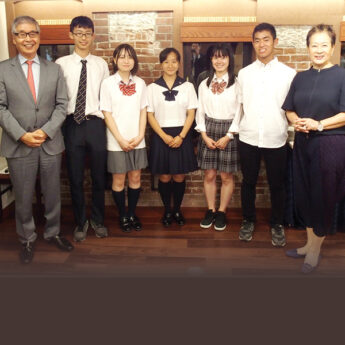Japan’s school year was disrupted by the coronavirus, and the restrictions placed on in-person classes have impacted not only Japanese public schools but also international schools. To ensure that learning continued, educators quickly embraced digital options.
While the state of emergency has been lifted in all parts of the country as of 25 May, the risk remains. But the new approaches and lessons learned as a result of Covid-19 may transform education. ACUMEN spoke with schools to find out how they have responded and adapted.

BST embraced e-learning after 11 March, 2011.
Going online
British School in Tokyo (BST) Communications Manager Lowly Norgate said that BST has been using e-learning for some years now, so the shift was relatively smooth. Their move towards e-learning was triggered by another major disaster, the Great East Japan Earthquake and Tsunami of 11 March, 2011.
“We have been using the Google Suite since 2011 and reverted to online learning in the aftermath of 3/11, when the school closed for a few weeks. We started using Google Classroom in 2014 and use this for the e-learning. Our teaching staff currently deliver the face-to-face learning with Zoom,” she explained, speaking of the now ubiquitous online meeting platform.
BST moved to online classes in the face of Covid-19 the week of 2 March, after the Tokyo Metropolitan Government requested that schools be closed.
At Nishimachi International School, the choice of platform depends on the grade, class and type of learning activity taking place. “Teachers are using an array of tools, including Google Hangouts, Google Chat and Zoom, to facilitate multiple ways of interacting,” explained Head of School Karen O’Neill. “Much like a class in school, this setup means there will be some whole-class time, one-to-one time for those children who require it, and some independent learning time, too. We have digital tools to support each of these ways of learning”.

Horizon students present musical theatre from home.
Better tailored
The use of a variety of digital tools is turning out to be a plus for teachers, as it gives them more options for connecting with the individual needs of each student.
“It has been observed that, for some children, this style of remote learning is better suiting their quieter personalities, enabling an escape from the sometimes overwhelming intensity of face-to-face classroom life,” said Kirsten O’Connor, founder and chief executive of British Chamber of Commerce in Japan (BCCJ) member firm Quest Tokyo, which offers professional educational services to families and schools in Tokyo.

Nishimachi students hold a virtual “book parade”.
“Evaluation of this intense period of online learning will undoubtedly highlight some of the more effective long-term digital teaching strategies—particularly in education systems at more advanced stages of digital integration. This has been an ongoing area of focus for schools for many years,” O’Connor said.
“What we must not overlook, however, as things return to some semblance of normality and digitisation grows, is the importance of social interaction in school. Technology presents many opportunities—which should absolutely be harnessed—but for children and students, learning from and with their peers is a crucial part of development”.
Cracks exposed
But while technology is surfacing many positives, the heavy reliance on digital infrastructure has brought to light some inequalities.
“School-building closures and the almost overnight global switch to prolonged online learning has revealed the stark and ongoing reality of national and international education inequity,” O’Connor said. “It is painfully clear that socioeconomic and geographical factors continue to affect access to quality learning opportunities for a high number of students”.
In terms of Japan, many educators have cited the lack of technological resources in public schools—and the lack of training for teachers and students in how best to utilise these learning tools—as a key reason for the nation’s education system largely having been unprepared for a sudden shift to online classes. It’s an issue that has not gone unnoticed by the government, and the administration of Prime Minister Shinzo Abe has said that it wants to make tablets available to all students by 2023. Perhaps the coronavirus situation will boost those plans and help bring the level of technology use in Japanese schools on a par with those in the UK and elsewhere.

Chiyoda International school provides 1:1 laptop access.
Positive change
While there is no doubt that the curbs on social contact has created challenges for students and educators, the legacy of Covid-19 in the field of education looks to be a positive one. The sudden, forced shift to new approaches to teaching—and the accelerated implementation of those already being explored—has made us look at education through a new prism.
“Online learning, around the world, is certainly offering both challenges and opportunities to schools and students. For teachers, ensuring that all children are engaged in every remote session is tough—particularly with very young children,” O’Connor explained. “There is, however, no doubt that this situation has accelerated the progress that schools were making on how to purposefully employ technology, something schools have been grappling with globally for many, many years”.
Horizon Japan International School head Emin Huseynov turned his eyes to the teachers themselves. He hopes that their efforts to maintain learning during the crisis will lead to a better appreciation of the important role they play in society.
“The world is full of millions of teachers—many doing brilliant things right now. They are our metaphorical ‘practitioners’ that will be on the front lines of blending the best of the old and new educational practices. The entire globe now understands that growing and preparing together is essential to future success,” he said.
Advice
Distance learning due to Covid-19 concerns is likely to be with us for a long while. Now that the state of emergency has been lifted, schools may cautiously begin looking at ways to reopen. And while physical classes are likely to resume in some form, there’s little doubt that increased e-learning is here to stay.
How can parents help their children adapt and get the most out of the educational experience?
Huseynov said that “some younger students are not as proficient in their use of technology as their older counterparts, so we consider autonomy as the biggest challenge for primary-aged students”. He recommends setting up a routine and completing assigned work on time as a way of allowing parents to best help their children without creating undue stress. This can also help nurture the skills they have already been developing in class. “Students do not need to lose the skills they have already acquired. In fact, they can gain and progress intellectually during distance learning. Schools may be closed, but learning does not have to stop”.
James Moore, assistant head of school at The Montessori School of Tokyo, encourages parents to remember that the mental health of children is more important than conventional academics—especially at times like these. “If your child is engaging readily in the online content shared by their school, that’s great; but try not to worry too much about ‘falling behind’ if your child is participating less than some others,” he said.
Daniel Roebuck, from the business office of Chiyoda International School Tokyo, also mentioned physical and mental well-being. “Take eye breaks. Stretch your legs. Talk to your child about what they are learning. Turn off the TV at mealtimes. Don’t forget play is important. Children are often suffering stress, too, yet cannot express these feelings clearly”.
Finally, Moore shared an important point about finding balance, and why it matters.
“Remember that it’s also great if your child is engaged in other meaningful activities around the home, or if you’re finding more quality time to just be together as a family,” he said. “Every family must find what works best for them in these exceptional circumstances and remember that doing your best really is enough. Happy, healthy students will be the ones best positioned to learn when we all return to school”.






